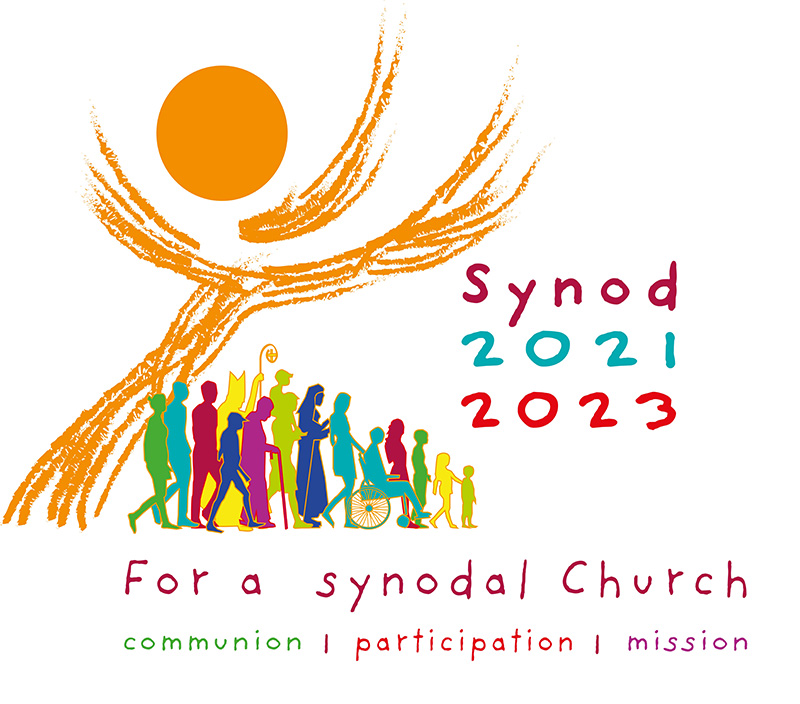
More information about the Synod on Synodality can be found at usccb.org/synod and www.synod.va/en.html.
Jenny Snarski
Catholic Herald Staff
In early January, the Diocese of Superior sent out detailed instructions to parish leaders to begin implementing the parish phase of the Synod on Synodality. During the months of January and February, parish clusters will hold in-person gatherings to come together for prayer and discussion.
Additionally, the diocese has created an online portal that is open during the months of January and February. The site can be found by clicking the synod logo on the homepage at catholicdos.org, under the “Diocesan Synod” heading. Anyone unable to attend a local gathering is encouraged to utilize this means of participating.
“My hope for the online portal is that people will truly participate in the process of synodality via the portal – praying, listening, discerning and sharing,” Bishop James P. Powers said in a recent letter to parish leaders. “Accordingly, the portal will include the same opportunities for prayer, questions, Scripture reflections, etc., that will be utilized at the in-person gatherings.”
These in-person gatherings and the online portal are an opportunity for the laity, religious and clergy to discuss the work the Lord is doing in the church today.
The guidelines put forth by the Vatican for the diocesan phase of the synodal process were open-ended in their application. After some deliberation, Bishop Powers decided that local gatherings would be the most fruitful.
Citing paragraph 1883 of the Catechism of the Catholic Church regarding the principal of subsidiarity – where the most effective solution to any challenge is always the most viable local solution – the bishop said that leaning on that understanding, “We are going to do all of our listening sessions as local parish clusters. We hope that in so doing, new relationships will be created and existing relationships strengthened.”
These gatherings will look different in each cluster, but each of them will have a few common factors: prayer, reflection on Scripture and facilitated conversation.
The Scripture passage that Bishop Powers chose is Mark 2: 1-12. In this passage, four men carry their paralyzed friend on a mat to Jesus. Finding the house which Jesus was in too crowded to get into, the four friends carry the man up to the roof, open a hole in the ceiling and lower him to the feet of Jesus.
According to Chris Hurtubise, director of the diocese’s Office of Evangelization and Missionary Discipleship, “This beautiful passage was chosen intentionally to center these conversations on the person of Jesus Christ and on our mission of making him known and loved. We’ve been saying over and over, that the main thing is to keep the main thing the main thing. If these conversations are not centered on the saving mission of Jesus and on discerning how we can all more fervently and more fruitfully carry out our own various roles in that mission – then these conversations will necessarily go astray.”
After reflecting on this passage, participants will discuss key questions.
Hurtubise clarified that the goal of these questions is to unify, strengthen and build up the church. “As Catholics, we believe that the church is not a collection of individual members – but the unified Body of Christ. The questions were chosen to help us come together as disciples of Jesus and ask what he is doing in our lives and our communities.”
“My hope for this Synod is that, guided by the Holy Spirit, we might take those friends from the passage from Mark 2 as our example,” said Bishop Powers. “And we might encounter the needs in our community honestly and openly, build relationships, and live our call to missionary discipleship across the Diocese of Superior by bringing our friends to our Lord Jesus.”
Following these gatherings, the parish clusters will submit a short report on the fruits of their local conversations to the diocese. The bishop and Chancery staff will also gather with leaders from each cluster to discuss the fruits of their conversations later this winter.
After the conclusion of the follow-up sessions, diocesan staff will synthesize all of the reports from the clusters, submissions to the online portal and gathered feedback from the follow-up sessions and submit a report to the USCCB. This report will then be synthesized with reports from all of the other dioceses in the United States and sent to Rome to be included in laying the groundwork for the global gathering of bishops in 2023.
